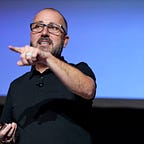Walking Deck — Articulate Your Project Plan in 15 Minutes or less — or risk losing attention
The 5-Core Elements of a Walking Deck
Nail your Pitch — Build and Rehearse Your Walking Presentation
Three of the most important tools project managers have at their disposal are designed for storytelling and consistent messaging.
- Elevator Pitch — The typical Elevator Pitch. The project synopsis you can use in a 30-second elevator ride. We often build these around a core value prop, addressable market, desired outcomes, goals and a timeline overview.
- Walking Deck — The simplest but most detailed version of the plan, story, goals and impacts in a 5–15 minute walk. Precise detail may vary based upon the plan, the planner, and the person you are updating or influencing. But generally 3–7 slides. Often best delivered not as slideware, but as a story with slides sent later to reinforce what you outlined.
- Presentation Deck — Sometimes called a Seminar Deck — Generally this is the presentation you use with internal and external audiences. Historically this was 25–30 slides that you’d generally run through in 45–60 minutes.
Your Project Plan underpins all of the above and should be the single version of the truth and represent the totality of your work, up to and often including GANT charts, detailed RACIs, and loads of milestones, KPIs, and tracking mechanisms.
Core Elements of a Walking Deck — Effectively this is the narrative you need to learn, memorize, and to be really impactful - rehearse - prior to each delivery depending upon the audience. Politicians have done this for centuries, for them its known as a stump-speech, which they use to outline their stance on topics and issues. Its typically the body of any speech a politician makes when he/she does a local visit to a new city -with a different opening and closing depending upon the city or venue at which they are presenting. The Walking Deck thus, is an outline for a conversation or mini-speech designed to persuade and gain support from others, but also a forum to elicit feedback and gain helpful constructive criticism.
The Core Elements of a Walking Deck should include:
- MVP — Mission, Vision, and Purpose — what we are doing, why we are doing, and who we are doing it for.
- TAM — Total Addressable Market and the portion of the market opportunity we expect to achieve within a specific timeframe
- The Competition — This means the company or products or services with which your company or products complete. But this often this may even be your own company, product or team — be clear if you need to disrupt-yourself as part of this project.
- The Team — this can be shown as a RACI or OARPI, but its important to be clear on who are the “doers” vs the “watchers” vs the “reviewers or approvers” and to be ultra clear for your audience what role you’d like for them to play in the project and for how long. Later when you send along the slides, this will be a good time to reinforce the role you’d like them to play and look for their explicit confirmation as to what they are agreeing to do to support.
- Timeline & Scoreboard — your plan should be reasonably clear to show a time horizon. This should NOT be your deep project plan, but rather a linear view of the steps and important milestones that you will use the track meta success and decision deltas along the way. The scoreboard doesn’t have to be complete, but it should be clear on what you are going to track, how you are going to track it, who is accountable for tracking it, frequency of reporting.
It should also be very clear through your Walking Deck and discussion what the duration of this project looks like and when the project ends.
A final tip — be flexible and open to feedback. Don’t fall in love with your slides or your pitch. Memorize it enough to be clear and to be able to pitch from memory at a moments notice. But don’t fetishize it so much that you can’t import feedback and suggestions on the fly. Remember the Walking Deck and your pitch are designed to elicit some form of feedback or support.
